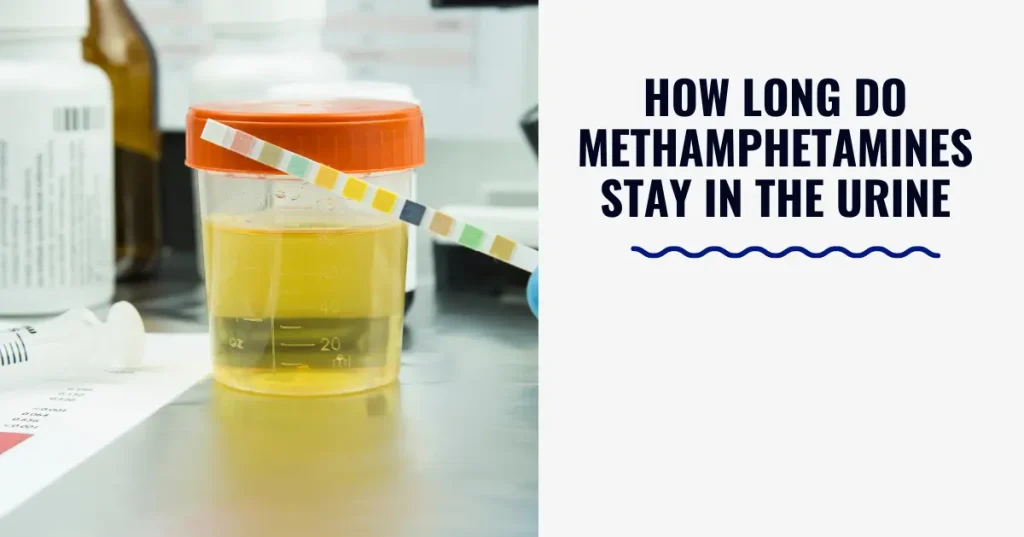Detecting methamphetamine in urine is important because it helps us know if someone has been using the drug. It’s like checking to see if they’ve been doing something they shouldn’t. If we find methamphetamine in urine, it tells us that the person might need help because using methamphetamine can be harmful.
For example, it can make people act strangely, hurt themselves, or make bad decisions. So, finding methamphetamine in urine can help us keep them safe. It’s also important for jobs and legal stuff. Employers and courts sometimes test urine to see if someone has been using drugs, including methamphetamine.
If methamphetamine is found in urine, it could affect their job or legal situation. Lastly, knowing if someone is using methamphetamine can help us keep an eye on public health. We can see if many people are using it and try to stop it from causing more problems.
Working of Methamphetamines in the body
Methamphetamine works by entering the body and going to the brain and other parts. It gets there through things like swallowing pills, snorting powder, injecting liquid, or smoking crystal meth. Once inside, it makes the brain release a lot of a chemical called dopamine, which makes people feel really good and excited. It also boosts other chemicals that make you feel awake and alert. This can make your heart beat faster, raise your blood pressure, and make you not want to eat.
After some time, the body starts to break down the methamphetamine into different parts. These parts are then removed from the body through pee and poop. The effects of methamphetamine can last for a few hours, but the drug stays in the body for longer. Using methamphetamine for a long time can cause addiction and harm your health. So, while it might make you feel good at first, it can lead to serious problems later on.
Factors Influence Methamphetamine Stays in Urine
Several factors can influence how long methamphetamine stays detectable in urine.
- Frequency and Amount of Use: The more often and the larger the dose of methamphetamine used, the longer it will remain detectable in urine.
- Metabolism Rate: Individual differences in metabolism can affect how quickly the body breaks down and eliminates methamphetamine. A faster metabolism generally results in shorter detection times.
- Individual Variations: Factors such as age, weight, overall health, and genetic makeup can influence how the body processes and eliminates methamphetamine, leading to variability in detection times among individuals.
- Urinary pH: The acidity or alkalinity of urine can affect the excretion of methamphetamine. Alkaline urine tends to increase the elimination of methamphetamine, potentially shortening the detection window.
- Hydration Levels: Adequate hydration can help flush methamphetamine out of the body more quickly through urine. On the other hand, dehydration can prolong detection times by reducing urine production and excretion.
- Concurrent Drug Use: The presence of other substances in the body, such as alcohol or medications, can affect the metabolism and excretion of methamphetamine, potentially altering its detection window.
- Route of Administration: The method used to consume methamphetamine (e.g., oral ingestion, snorting, smoking, injecting) can impact its absorption, metabolism, and elimination, thereby influencing detection times in urine.
Methods Used to Detect Methamphetamine in Urine
Several methods are commonly used to detect methamphetamine in urine.
Immunoassay Screening
This is the initial screening test used to detect the presence of methamphetamine and its metabolites in urine samples. Immunoassay tests work by using antibodies that react with specific substances, producing a measurable signal if methamphetamine is present. While immunoassays are rapid and cost-effective, they can sometimes yield false-positive results due to cross-reactivity with other substances.
Confirmatory Testing
If a urine sample tests positive on the initial immunoassay screening, confirmatory testing is performed to verify the results. Gas chromatography-mass spectrometry (GC-MS) or liquid chromatography-mass spectrometry (LC-MS) are commonly used confirmatory methods for detecting and quantifying methamphetamine and its metabolites with high accuracy and specificity.
Confirmatory testing provides more detailed information about the specific substances present in the urine sample, helping to confirm the presence of methamphetamine and rule out false positives.
Enzyme-Linked Immunosorbent Assay (ELISA)
ELISA is another immunoassay-based method used for methamphetamine detection in urine. It works similarly to other immunoassays but uses an enzyme-linked antibody to detect the presence of methamphetamine or its metabolites. ELISA tests are often used in laboratory settings for their sensitivity and specificity.
Point-of-Care Testing (POCT)
POCT devices are portable and rapid tests that can be used for onsite detection of methamphetamine in urine samples. These tests are based on immunoassay principles and provide quick results, making them convenient for situations where immediate detection is necessary, such as in emergency rooms or roadside drug testing.
High-Performance Liquid Chromatography (HPLC)
HPLC is a chromatographic technique used for separating and quantifying substances in a mixture. It can be used in conjunction with mass spectrometry (HPLC-MS) for sensitive and accurate detection of methamphetamine and its metabolites in urine samples.
Can Methamphetamine be Cleared from Urine
Yes, methamphetamine can be cleared from urine, but it takes time. Your body breaks down methamphetamine into different parts through a process called metabolism. These parts are then removed from your body when you pee or poop.
Drinking lots of water or other fluids can help speed up the process by flushing out methamphetamine from your body through urine. It’s like cleaning out your system. However, it’s important not to drink too much water too quickly, as this can be harmful.
The time it takes for methamphetamine to be completely cleared from your urine depends on factors like how much you use, how often you use it, and how fast your body metabolizes it. Usually, methamphetamine can be detected in urine for a few days after use, but it can vary from person to person.
Conclusion
Knowing how long methamphetamines stay in urine is important. It helps keep workplaces safe and ensures people follow the law. It also helps with treating drug addiction and tracking public health trends.
Factors like how much methamphetamine is used, how often it’s used, and how fast a person’s body works affect how long it stays in urine. Tests like immunoassay screening and confirmatory testing help detect methamphetamine in urine accurately.
Drinking plenty of water and waiting for some time can help clear methamphetamine from urine faster. But remember, it’s best to avoid using methamphetamine altogether for a healthier life.



